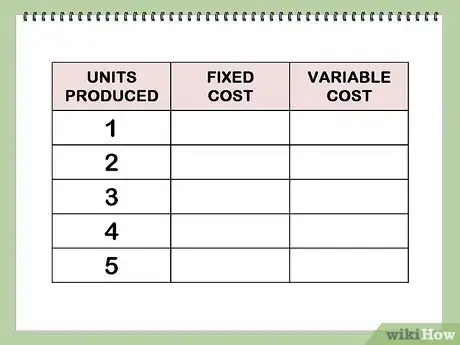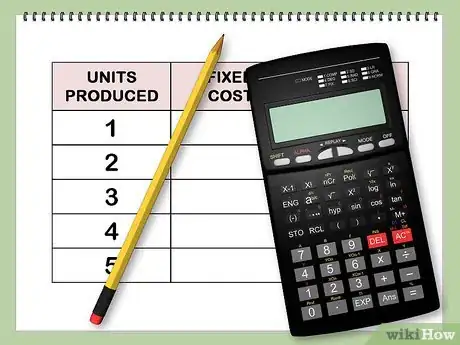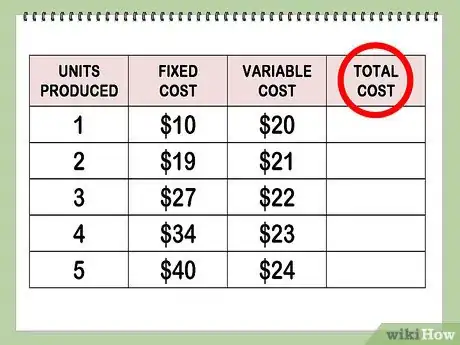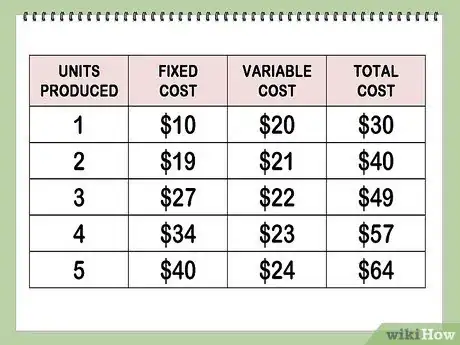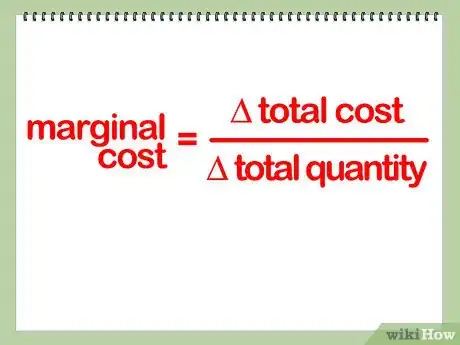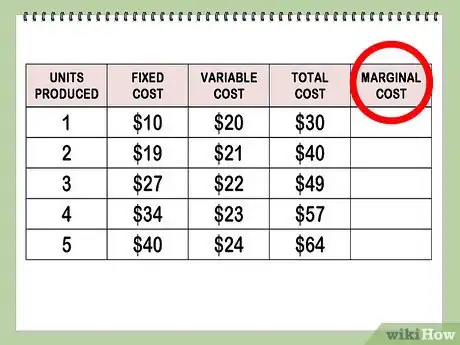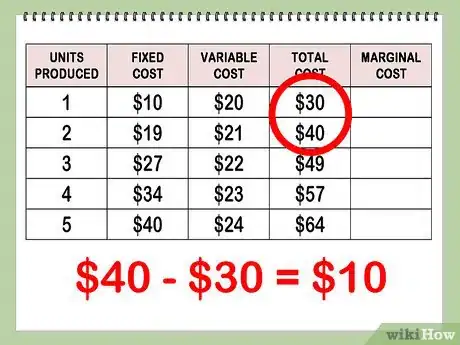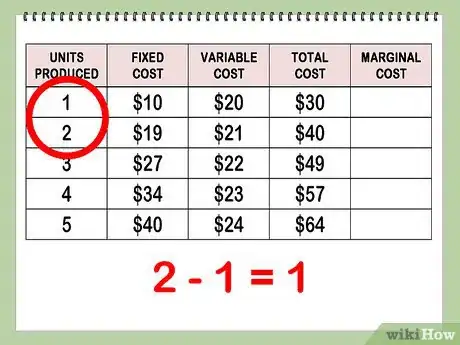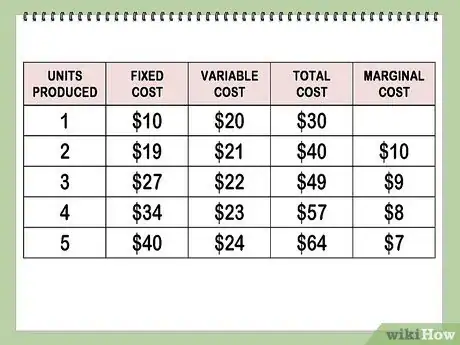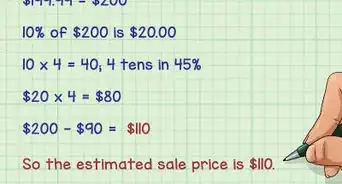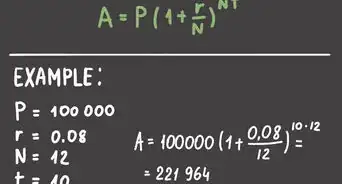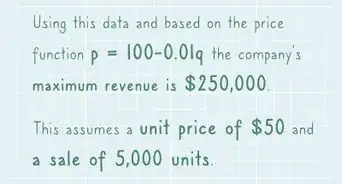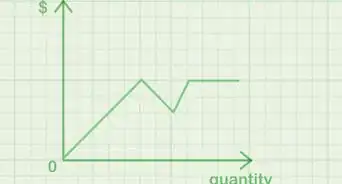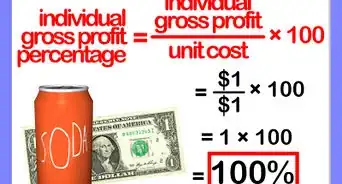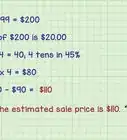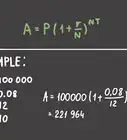This article was co-authored by Alex Kwan. Alex Kwan is a Certified Public Accountant (CPA) and the CEO of Flex Tax and Consulting Group in the San Francisco Bay Area. He has also served as a Vice President for one of the top five Private Equity Firms. With over a decade of experience practicing public accounting, he specializes in client-centered accounting and consulting, R&D tax services, and the small business sector.
This article has been viewed 425,026 times.
Marginal cost is a production and economics calculation that tells you the cost of producing additional items. You must know several production variables, such as fixed costs and variable costs in order to find it. You can learn how to find marginal cost by using a formula.
Steps
Formula Preparation
-
1Find or make a chart that shows your production costs and quantities. Make sure to include the following in your chart:
- Quantities. You will want to devote the first column in your chart to the total number of units produced. Your quantities can increase by 1, such as 1,2,3,4 etc. or they can increase by larger increments, such as 1,000, 2,000, 3,000 etc.
- Fixed costs and variable costs. During production there are certain costs, such as rent, that are fixed. Other costs, such as the cost of materials or labor hours, are variable according to the quantity.[1] Make columns for each of the costs next to the quantities and input the figures.
-
2Take out a pen, paper and calculator. You can also choose to do the work on a spreadsheet; however, you can understand the marginal cost calculation better if you write out the formula initially.
Solve Total Cost
-
1Place another column labeled "Total Cost" to the right of your columns for "Fixed Cost" and Variable Costs."
-
2Add together your fixed costs and variable costs for each number of units.[2]
-
3Enter the total cost calculation in the column, until all the costs for each unit increment are calculated.
- If you are using a spreadsheet program, you can insert a formula in the total cost column that will add together the fixed and variable costs on each row to calculate total cost.
Marginal Cost Formula
-
1Write out the formula "Marginal Cost=Change in Total Cost/Change in Total Quantity."[3]
-
2Make a column to the right of total cost that says "Marginal Cost." Your first line in the column will remain blank, because you cannot figure out a marginal cost based on no units of production.
-
3Find change in total cost by subtracting the total cost in row 3 from total cost in row 2. $40 minus $30.
-
4Find the change in total quantity by subtracting the total quantity in row 3 from the total quantity in row 2. For example, 2 minus 1.
-
5Plug your numbers into the formula. For example, Marginal Cost=$10/1. In this case, the marginal cost is $10.
-
6Write your marginal cost in the column on the second row. Continue to subtract figures from the row above to figure out marginal cost for the remaining units of production.
Community Q&A
-
QuestionCan marginal cost go up?
 Community AnswerYes, marginal cost can increase as it exhibits economies of scale.
Community AnswerYes, marginal cost can increase as it exhibits economies of scale. -
QuestionWhy does the fixed cost increase and the variable cost remains the same? It should be the opposite.
 Community AnswerTotal fixed costs should remain the same. The fixed cost per unit will vary according to how many units are produced. For example, if fixed costs were $4000, and 400 units were produced, fixed cost per unit is $10. If 100 units were produced, then fixed cost per unit is $40.
Community AnswerTotal fixed costs should remain the same. The fixed cost per unit will vary according to how many units are produced. For example, if fixed costs were $4000, and 400 units were produced, fixed cost per unit is $10. If 100 units were produced, then fixed cost per unit is $40. -
QuestionHow do I find marginal total cost?
 Community AnswerTotal cost B - Total cost A / the difference in output produced. This is used to determine the increase in total cost contributed by an increase in total output produced.
Community AnswerTotal cost B - Total cost A / the difference in output produced. This is used to determine the increase in total cost contributed by an increase in total output produced.
Things You'll Need
- Calculator
- Chart of production costs
- Pencil/pen
- Paper
- Marginal cost formula
- Spreadsheet program (optional)
References
- ↑ http://economics.fundamentalfinance.com/micro_costs.php
- ↑ https://courses.lumenlearning.com/boundless-economics/chapter/production-cost/
- ↑ https://corporatefinanceinstitute.com/resources/knowledge/accounting/marginal-cost-formula/
- http://www.dummies.com/how-to/content/how-to-determine-marginal-cost-marginal-revenue-an.html
- http://economics.fundamentalfinance.com/micro_atc_mc.php
- https://www.khanacademy.org/economics-finance-domain/ap-microeconomics/production-cost-and-the-perfect-competition-model-temporary/short-run-production-costs/v/fixed-variable-and-marginal-cost
About This Article
To find marginal cost, first make a chart that shows your production costs and quantities. Create columns for units produced, fixed cost, variable cost, and total cost. Then, find the change in total cost. Do this by subtracting the cost for the lower quantity of units from the cost of the higher quantity of units. Next, find the change in total quantity by subtracting the higher quantity of units from the lower quantity. Finally, divide the change in total cost by the change in total quantity to calculate the marginal cost. For more help with setting up your chart, read on!
